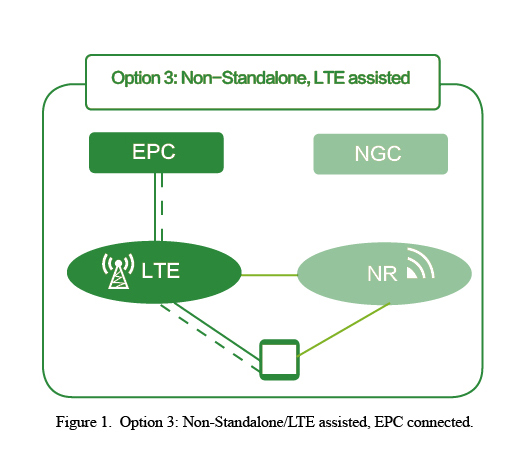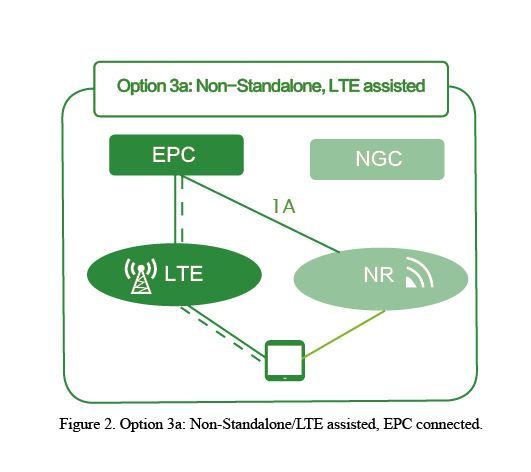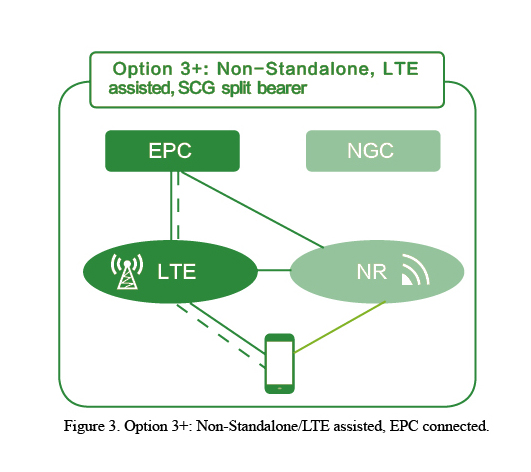The Road to 4G/5G Convergent Evolution
since the first commercial deployment in 2010, LTE networks have been widely launched around the world, stimulating the rapid growth of mobile broadband services. Mobile internet and the internet of things (IoT) are moving into a new stage of development where there will be a thousand-fold increase in data traffic, hundreds of billions of connections, and more diversity of services. Therefore, 3GPP has defined a new 5G air interface with technical enhancements in three major applications such as enhanced mobile broadband (eMBB), massive machine-type communication (mMTC) and ultra reliable low latency communication (URLLC).
To meet the demand for new service growth, existing LTE/LTE-A networks are gradually enhanced and evolving. The enhanced and evolving technologies are partly in line with the 3GPP 5G standards and can be deployed in combination with enhanced 4G/5G convergent techniques to enable smooth evolution to next-generation networks.
In terms of UE development and compatibility, the network evolution falls into two phases. The phase 1 is defined as Pre5G where 3GPP R12/R13/R14 technologies are introduced on the basis of compatibility with current LTE UEs to improve network capacity and user rates and carry more diverse services. The phase 2 is 4G/5G convergence, in which a 5G new air interface technology is completely introduced for necessary scenarios through the convergent networking and interoperability between LTE and NR on the condition that UEs support 3GPP R15 new radio (NR) and multi-connection technologies. This ensures the continuity of convergent network coverage, enhances user network awareness, and offers an abundance of services.
Phase 1: Pre5G
The Pre5G technologies contain Massive MIMO, LAA/eLAA, and IoT.
● Massive MIMO: More antenna arrays are used in RRUs and AAUs through beamforming to improve spectrum efficiency and expand network capacity and coverage. As 5G NR takes Massive MIMO as its core technology, Pre5G Massive MIMO base stations that are being deployed can also allow their antenna devices to smoothly evolve to 5G NR without any change. Although at present 5G NR terminals are not commercially ready, deploying Massive MIMO networks can help operators improve their LTE competitiveness, ensure the fastest evolution to 5G at lowest costs, and maintain their leading network advantages in the 5G era.
● LAA/eLAA: ITU has allocated a great number of new spectrum resources to 5G NR, ranging from 6 GHz to 90 GHz. To provide greater network capacity, LTE needs to make full use of existing spectrum resources. LAA/eLAA based on unlicensed spectrum and carrier aggregation can fully utilize existing spectrum resources to quickly increase capacity in heavy-traffic density areas. Using DFS, LBT, and TPC technologies, LAA enables interference avoidance and rapid resource scheduling in the unlicensed spectrum. This guarantees not only fair competition among different radio systems but also radio transmission efficiency when a conflict occurs. Moreover, eLAA also enables uplink transmission in the unlicensed spectrum to address the issue of insufficient uplink resources in some networks. Massive MIMO and LAA can allow a single UE to deliver a peak rate of 1 Gbps and the networks to deploy high-bandwidth new services, helping operators develop new business models and applications.

● IoT: As higher requirements are placed on in-depth coverage of IoT, it is recommended that low frequency bands with good coverage be a preferred choice for wide-area mobile IoT. eMTC may be used for networking with existing LTE in-band carriers. N×1.4 MHz radio resources of the existing LTE carriers are dynamically allocated to eMTC. Since eMTC and LTE share the same frequency resources, IoT services that have low real-time requirements can be shifted to be delivered on the time when the network is idle. This increases IoT service bearer capability with no impact on LTE user experience, making LTE and Pre5G networks more valuable and efficient.
Phase 2: 4G/5G Convergence
The first version of 5G NR standards will be completed in 2018. As 5G NR standards are set to be frozen, commercial 5G NR terminals will emerge. Mainstream 5G NR chip vendors support multi-connection between LTE and NR, which can be used to meet user requirements for seamless network coverage and enhanced service experience.
In the initial 5G deployment, LTE UEs and NR terminals will coexist for a long time, and a very large proportion of terminals are LTE UEs while there are few NR terminals.

When 5G networks start to be deployed in local areas as needed, deploying 4G and 5G convergent networks can provide best user experience.
In this phase, the spectrum of Massive MIMO base stations will be gradually refarmed to that of 5G NR. Initially, according to the distribution proportion of end users, a part of LTE frequency resources are refarmed to those of 5G NR. As the distribution proportion of end users varies, more LTE frequency resources will be refarmed.
5G NR base stations can be plugged in 4G ones for 4G/5G convergent networking. The convergent networking can use the 5G architecture options defined in 3GPP such as Option 3: Non-standalone/LTE assisted, EPC connected (Fig. 1) or Option 3a: Non-Standalone/LTE assisted, EPC connected (Fig. 2). The two modes differ in that in Option 3, the 4G/5G PDCP converges in the core network while in Option 3a, the 4G/5G PDCP converges on the base stations.
In these two options, the control-plane anchor point of a 4G/5G convergent network is in the LTE network, which guarantees a continuous coverage of 4G/5G multi-mode terminal services while offering enhanced service experience in the 5G deployment areas.
A 4G/5G convergent network can also use the separation of user plane and control plane to offload the 4G/5G convergent multi-mode user-plane traffic to the NR network and use the SCG split bearer to reduce changes to the existing LTE base stations and auxiliary transmission facilities, as specified in Option 3+ (Fig. 3).
The split between a central unit and a distributed unit (CU/DU) in a 4G/5G convergent RAN depends on service scenarios and needs to consider performance, fronthaul, costs, and chipsets. A suitable split point is placed at the RLC and PDCP layers, that is, CUs are placed at the PDCP (or higher) layer and DUs are placed at the RLC (or lower) layer.
CUs can be virtualized by using general-purpose processors. Considering the cost-effectiveness, DUs use special-purpose processors. CUs and DUs can be deployed flexibly through the software technology such as network slicing to meet various service scenarios.

The Pre5G technologies advocated by ZTE have been widely accepted in the industry, and ZTE has started to deploy them globally. Based on these technologies, ZTE has also been well prepared for further 4G/5G convergence, aiming to help cooperative partners achieve the evolution from mobile internet to internet of everything (IoE).